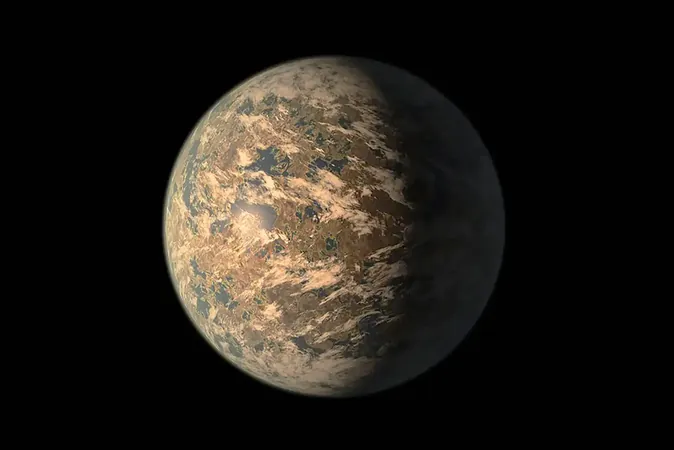
Is TRAPPIST-1e Our Next Earth? Newly Discovered Planet on the Brink of Habitability
2025-09-14
Author: Rajesh
A Glimpse Into the Habitable Zone
Astronomers are buzzing with excitement over TRAPPIST-1e, a rocky planet located a mere 40 light-years away. Utilizing the state-of-the-art James Webb Space Telescope (JWST), researchers have been able to analyze this intriguing world as it crossed in front of its star, revealing tantalizing clues about its possible atmosphere.
What the Data Reveals—and What It Doesn’t
In a groundbreaking new study, scientists have shed light on the essential gases enveloping TRAPPIST-1e. While they’ve successfully ruled out a thick, hydrogen-dominated atmosphere, the hunt continues for what gases might actually exist.
Stellar Interference: The Challenge Ahead
TRAPPIST-1, the planet’s host star, is a red dwarf known for its unpredictable flares and star spots, complicating measurements and obscuring clear signals from the planet’s atmosphere. This stellar activity can hide the signs of any potential atmosphere, making precise observations a tough nut to crack.
The Science Behind the Spectroscopy
The JWST team's observations involved a technique called transmission spectroscopy: as TRAPPIST-1e transited, starlight passed through its atmosphere, allowing scientists to pick apart the molecular fingerprints of gases like water vapor, methane, and carbon dioxide. However, the available data is still insufficient for definitive conclusions.
New Limits on Atmospheric Possibilities
Lead researcher Ana Glidden from MIT's Department of Earth, Atmospheric and Planetary Sciences highlighted that while a hydrogen-rich atmosphere has been ruled out, other scenarios remain on the table. A nitrogen-dominated atmosphere could be a possibility, but detecting it will require more observations to filter out any background noise.
Exciting Yet Cautious Prospects for Life
Ryan MacDonald, an expert in extrasolar planets, weighed in on the implications of these findings. He described the possibility of a nitrogen-rich atmosphere as exhilarating, hinting at the potential for conditions similar to those on Earth. However, he emphasized the need for caution, as initial data cannot fully eliminate the chance of TRAPPIST-1e being a barren rocky world.
The Future of Exploration is Bright!
With additional observations on the horizon, scientists are gearing up for future explorations that could refine their understanding of TRAPPIST-1e’s atmosphere. From four initial JWST transits, the team aims to expand to nearly twenty, dramatically improving their chances of detecting specific gases and determining the planet's potential to host liquid water.
A New Era in Astronomy
As this exhilarating research continues to unfold, the promise of discovering habitable conditions beyond our solar system has never been more within reach. With ongoing advancements in technology and data collection, the astronomical community is on the brink of potentially monumental discoveries.
Stay Updated on the Latest Discoveries!
The study has been published in The Astrophysical Journal Letters, and the scientific community eagerly anticipates what lies ahead as we continue to explore the cosmos.



 Brasil (PT)
Brasil (PT)
 Canada (EN)
Canada (EN)
 Chile (ES)
Chile (ES)
 Česko (CS)
Česko (CS)
 대한민국 (KO)
대한민국 (KO)
 España (ES)
España (ES)
 France (FR)
France (FR)
 Hong Kong (EN)
Hong Kong (EN)
 Italia (IT)
Italia (IT)
 日本 (JA)
日本 (JA)
 Magyarország (HU)
Magyarország (HU)
 Norge (NO)
Norge (NO)
 Polska (PL)
Polska (PL)
 Schweiz (DE)
Schweiz (DE)
 Singapore (EN)
Singapore (EN)
 Sverige (SV)
Sverige (SV)
 Suomi (FI)
Suomi (FI)
 Türkiye (TR)
Türkiye (TR)
 الإمارات العربية المتحدة (AR)
الإمارات العربية المتحدة (AR)